The Road Less Travelled: A Modern Pilgrimage in France
Jennifer Ladonne follows in the footsteps of Mary Magdalene, and the millions of pilgrims who followed
Under the dappled Provençal sunshine filtering through a thick canopy of beech trees, my pilgrimage buddy and I make the easy uphill hike to the grotto where Mary Magdalene (yes, that Mary Magdalene) spent the last 30 years of her life. Few visitors to Provence, French or otherwise, know that the saint supposedly arrived at Saintes-Maries-de-la-Mer, in the nearby Camargue, on a rudderless boat and spent the latter half of her life as a lone ascetic in a dank, dark cave. The sheer walls of the dramatic massif we’re heading towards, about 40 miles northeast of Marseille, also shelter a church and a Dominican abbey. In the welcoming inn on a grassy plain below, pilgrims can spend a comfortable night and tuck into a nourishing meal.
Neither of us is especially religious, but the mystery of the Magdalene story has its appeal nonetheless, and it’s easy to appreciate the solitude and beauty of the path leading to the cave. After our eyes adjust to the gloom, the cool grotto’s luminous marble statuary makes a magical contrast against the shadowy stones. This is the 19th-century version, and we wonder what the grotto was like at the time when French kings Francis I and Louis XIV visited the chapel before it was destroyed in the Revolution.
In recent years, more people have been making the 50-minute journey – slightly longer if you climb to the cliff-top chapel for panoramic views over the Provençal countryside – along with other well-trodden pilgrimage routes throughout France. This earliest form of tourism, practised by the faithful in France and throughout Europe for well over a thousand years, is making a quiet comeback. Perhaps it offers a more contemplative way of travelling as an antidote to our noisy world and demanding lives.

Pilgrims make the journey to worship here. Photo credit © F.Galilé
A Sacred Journey
Pilgrimage in Europe is as old as Christianity itself. Its major function, to narrow the distance between oneself and God by travelling to a place of spiritual renown, was achieved in myriad ways and myriad places. By the fourth century, the Roman Empire’s extensive network of roads through the Mediterranean world would have made journeying to the Holy Land, the gold standard of pilgrimages, doable for the faithful of all social strata. In lieu of the Holy Land, an apostle’s tomb, a sacred relic, a soaring cathedral or a place of miracles would do. That several holy figures from the time of Jesus found their way to France and Spain, however implausibly, attests to the enormous importance of proximity to the sacred in the medieval mind.
Although the Enlightenment’s changing attitudes dampened the appetite for the practice, it never fully died out, and in the past few decades, it has enjoyed a resurgence. Evermore individuals, and scores of specialised tour groups, are carving out time from busy lives to disconnect from the material world and seek a meaningful connection with the spiritual.
Although modern pilgrims may lack the religious fervour that once inspired long, often perilous and always slow-going journeys across uncertain terrain, it is still a journey that may prove transformative.
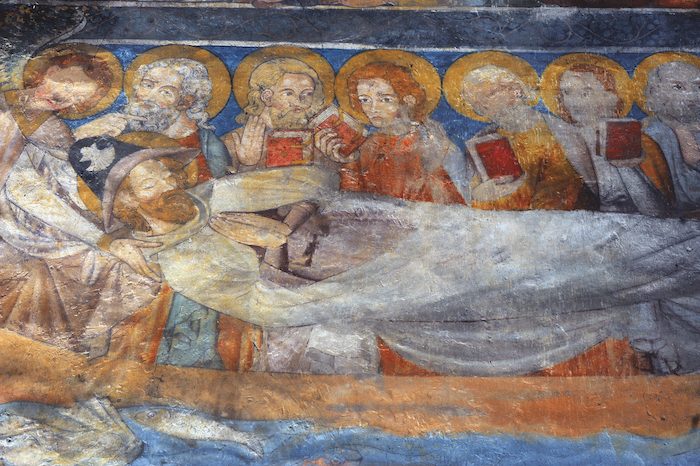
A fresco depicting Saint James at Notre-Dame du Bourg in Rabastens. Photo © ACIR-JJ-Gelbart
As my friend and I discovered, walking a pilgrimage route is good fun in twos, and it doesn’t have to take as much time as you might expect. Longer pilgrimages, like Santiago de Compostela, which stretches nearly 1,000 miles, can be done in smaller segments and many take no longer than a morning. Some pilgrimages – Chartres, for example – are popular around religious holidays. But these walks through picturesque countryside past historic villages and churches can be done by anyone at any time of the year.
Along the more travelled routes, a network of inns and hostels make eating and sleeping – not to mention bathing and laundry – easy to do. With a little research, travellers looking for a more high-end experience can pinpoint luxury hotels, Michelin-starred restaurants and notable vineyards along the way.

Saint-Trophime in Arles at the start of Via Tolosana. Photo © ACIR-JJ-Gelbart
1,000 Years and Counting
The Everest of pilgrimages, the Routes of Santiago de Compostela, also called the Camino de Santiago (the Way of Saint James), has remained Europe’s most journeyed pilgrimage since the 12th century. In 2019, the walk attracted nearly 350,000 pilgrims of 177 nationalities, an increase of more than 100,000 people since 2015.
There are four principal Camino routes in France, the only one to be named a UNESCO World Heritage Site, and many tributaries to other sacred sites. All of the routes lead to the tomb of the apostle Saint James, whose remains were purportedly discovered in Galicia, Spain, in the ninth century. The four principal routes take walkers past notable religious and historic sites and through some of France’s most charming villages.
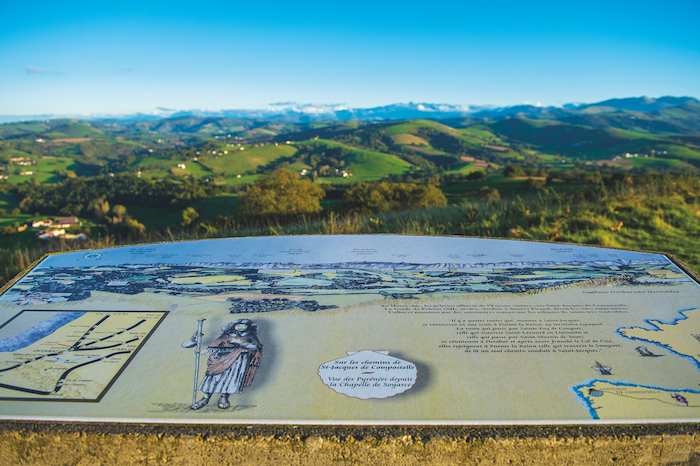
A table laying out the sights from Aroue to Ostabat. Photo © CIR-Compostelle-JJ-Gelbart
The Way of Tours (Via Turonensis), beginning at Paris’s Tour Saint-Jacques, divides in two, either through Chartres or via Orléans to Tours, then on through Gironde, the lush Landes forest, and past Bordeaux’s famous wine estates. A morning blessing by the bishop of the magnificent Notre-Dame du Puy sets you on the Way of Puy (Via Podiensis) – the most beautiful and rural of the four – winding up the high plateaus of the Massif Central, down through the Lot River valley and through no fewer than 10 Plus Beaux Villages de France.
The Way of Vézelay (Via Lemovicensis) begins at the Basilique Sainte-Marie-Madeleine de Vézelay, which is a major pilgrimage site in its own right, renowned for its sublime Romanesque architecture, Magdalene relics and its perfect alignment of sunspots at the summer solstice. It then leads pilgrims through the Loire to the beautiful Garonne Valley and into the Dordogne.

Photo © Lorant-Hecquet-Mairie-de-Vézelay
Crowded with important relics, the Way of Arles (Via Arelatensis) passes through Toulouse, Provence and the Camargue, where Mary Magdalene turned up, Notre-Dame des Tables in Montpellier, home of the Black Madonna, who has performed several documented miracles, and through Languedoc. Pilgrims usually begin at one of these major cathedral towns, and all of the roads lead eventually to Saint James’s tomb in Spain. But, of course, you can begin and end your journey anywhere on any one of these routes, depending on time and inclination.
The Compostela routes are the best marked – indicated with a sky-blue square around a golden scallop shell, the symbol of Saint James – and equipped with a well-priced network of hostels, inns and restaurants that cater to pilgrims. If you don’t feel like walking alone, or don’t feel like walking at all, cycling and group walking tours covering various segments of the pilgrimage abound.
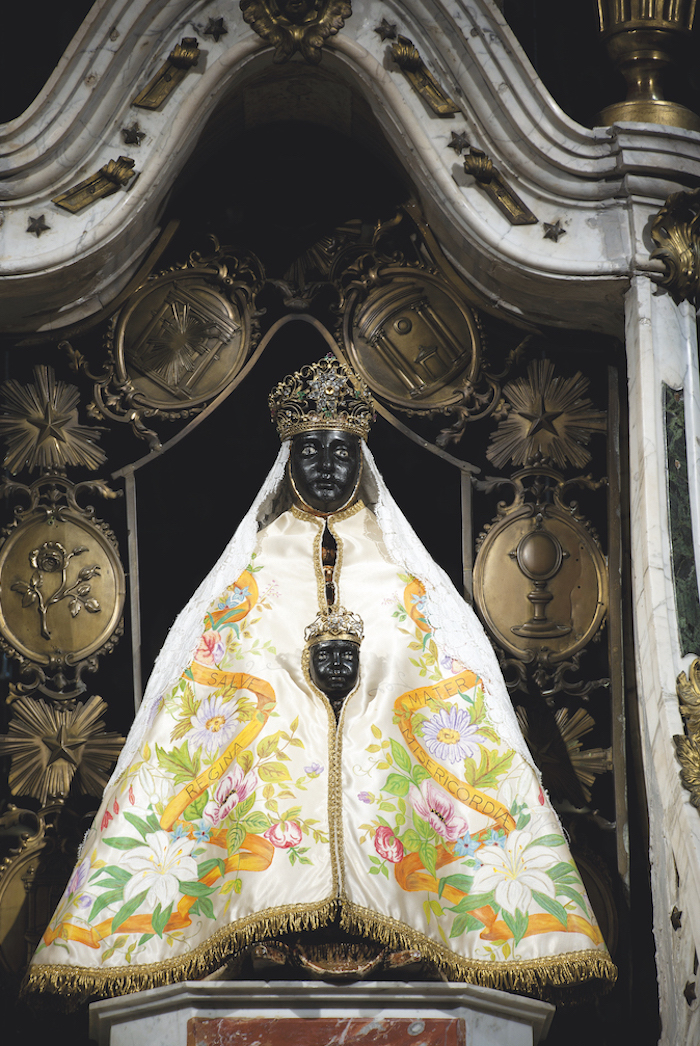
The Black Madonna at Le Puy-en-Vela. Photo © ACIR-JJ-Gelbart
The Road to Chartres
The walk to Chartres is historically one of the four most important pilgrimages on earth, dating back at least to the 10th century. It was a favourite journey for the faithful in the early 13th century, when the newly built church rose up from the plain an astounding 20 years after the great fire of 1194 destroyed most of the church and town. After centuries of decline, the pilgrimage was revived in the 1980s and now the 64-mile walk from Notre-Dame de Paris to Chartres (or the other way around) attracts more than 10,000 participants a year at Pentecost.
Chartres has long been revered not only for its unparalleled windows and Gothic architecture but for its precious relics: the veil of Mary, mother of Christ, said to have been worn by the Virgin during the annunciation, was donated to the church by Charles the Bald, the son of Charlemagne, in 876. Another relic of Chartres, the Black Madonna (scrubbed white during 10 years of sweeping renovations) inspired a parallel pilgrimage still celebrated at the Feast of the Assumption of Mary in August.
Chartres is also home to France’s shortest pilgrimage: the famous labyrinth, the largest and most elegant of its kind in Europe and one of the last surviving in the country. Inlaid into the cathedral floor in black and rose stone, its 11 concentric rings signify, among more esoteric things, the pilgrimage to the Holy Land for those unable to make the journey. To walk the labyrinth, be sure to visit on a Friday between Lent and All Saints’ Day (November 1). On other days it’s covered with chairs.
- The vaulted ceiling of Chartres Cathedral. Photo © DRAC, Centre-Val-de-Loire
- The labyrinth at Chartres. Photo © Alain Kilar
The 216 Steps
Rocamadour is as famous for its astonishing perched setting, carved into a sheer cliffside overlooking a deep gorge, as it is as a pilgrimage site (and its eponymous variety of delicious aged goat’s cheese). A major stop along the Santiago de Compostela route from Vézelay, its fame as a pilgrimage site dates back to 1166, when the perfectly preserved remains of Saint Amadour – servant to the Virgin Mary and husband of Saint Veronica, but more likely a local hermit – were found lodged in a rocky crevice. Like Mary Magdalene, Amadour seems to have arrived in France on a boat, this one apparently steered by an archangel, sometime in the first century. The site is also famous for its mysterious Black Madonna carved in wood and set high on an altar in the 12th-century Saint-Sauveur Basilica, a UNESCO listed site.
A string of miracles witnessed in Rocamadour drew the royal and the famous (Poulenc wrote a symphony about it), raising the site to a status nearly on par with Mont Saint-Michel. Pilgrims traditionally climbed the 216 stairs to the main chapel – there are seven carved into the rock, four of which can be visited today – on their knees, passing the 14 stations of the cross on their way. (These days there are elevators for those who can’t, or won’t, make the climb.) The fact that the hardcore still do it is a reason to avoid the pilgrimage on religious holidays, when it is swarming with people.

The ethereal Mont Saint-Michel in the mist. Photo © ACIR-JJ-Gelbart
Perilous Isle
Perhaps the most dramatic pilgrimage site in France, if not Europe, Mont Saint-Michel was also one of the most perilous. Rising like an apparition out of the bay half a mile off the Normandy coast, the Benedictine abbey’s majestic silhouette is unmistakable. Nowadays a bridge over the tidal causeway and an accurate tide-table make it reachable at almost any time. But for earlier pilgrims making the trek on foot – and many still do to this day – the silted salt flats, quicksand, fog and treacherous tides made it a dangerous journey.
Though the original abbey was founded in 966 at the behest of the Archangel Michael, who visited a monk in 708, the site we see today was built between the 11th and 16th centuries, with a few 10th-century vestiges.
There are several different walking routes to Mont Saint-Michel and many tours to join. Like all the pilgrimage sites, the best time to go is outside the summer tourist season and the Easter and Pentecost holidays. In late autumn and winter, when temperatures can still be mild and the Mont shrouded in mist, you can enjoy the lovely walk in relative peace.
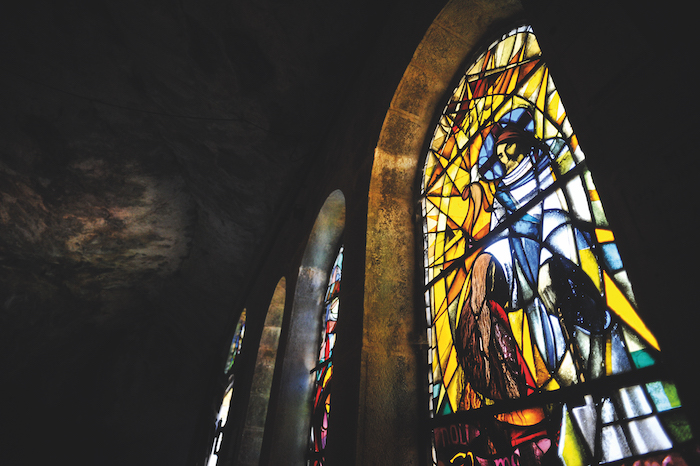
Magnificent churches and cathedrals line the routes. Photo © J.Ricoul
Place of Miracles
Lourdes was just a sleepy little town at the foot of the Pyrenees when the Virgin Mary appeared to a 14-year-old peasant girl several times in 1858 and showed her where to dig for a spring. In no time, the water bubbling up from the grotto ground was hailed for its healing powers. Since then, Lourdes’ popularity as the third most important pilgrimage site outside of Rome and the Holy Land has never stopped. To date, the Catholic Church has officially recognised 70 miraculous healings from its waters.
With around three million visitors a year from all over the world flocking here to drink or be clad in a white towel and gently immersed in the unheated spring water that flows from the grotto, the city is pretty much about one thing. Set atop the legendary grotto, the Sanctuary of our Lady of Lourdes holds a series of ceremonies throughout the day. The town is brimming with hotels and restaurants catering to the pilgrims and shops selling tourist trinkets, plastic water bottles of all shapes and sizes and ex-votos. Tour packages are popular and can help with lodgings and dining. If full immersion isn’t your thing, the miraculous waters flow abundantly from public spigots and you are free to take as much as you can carry.
Lourdes’ lovely natural setting on a meandering river with a picturesque lake and the mountains a stone’s throw away offers pilgrims plenty of other activities outside of the crowded grotto, church, bathing and devotional areas.
From France Today magazine

Time to relax after a hard day’s trekking. Photo credit © F.Galilé
Share to: Facebook Twitter LinkedIn Email
More in Mary Magdalene
Leave a reply
Your email address will not be published. Required fields are marked *

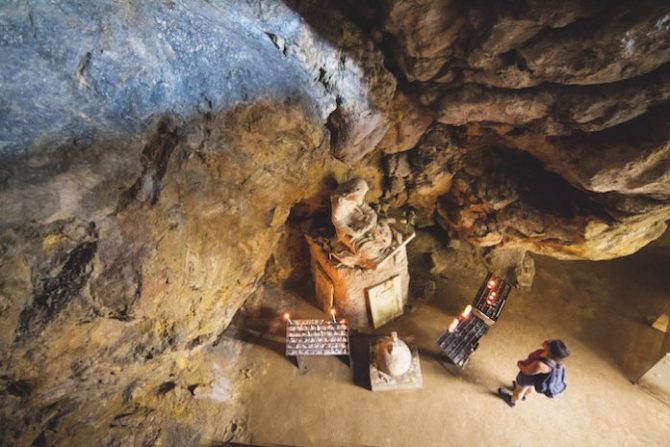


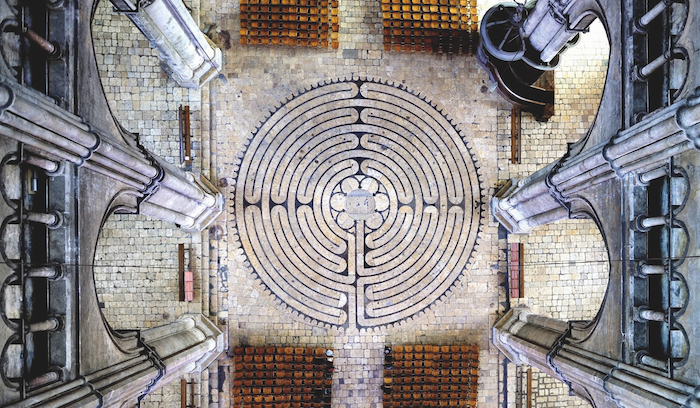



REPLY